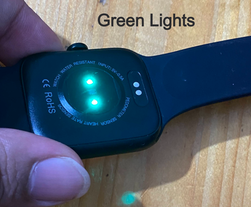

3,218


14,083


4,048

13,918

8,213
Updated: Sep 29, 2024
It is a very challenging task for the parent in modern society to manage what their child can do on their tablet or phone. This includes downloading and playing games, browsing content, watching videos, etc. This is very important to limit the amount of screen time they can have each day. It seems like an impossible task for a few (most of the parents). But it is really not that tough.
Parental controls on phones or tablets evolved a lot over the years. Back in the day, devices had kid modes that turned on a different application made only for kids. Generally, those are locked with a password so that the kid can't close that app. However, if they restart it, it will start the original user interface and the child can use it as they want. Few devices (like Amazon etc.) made kids tablets where the user interface is dedicated to children and they can't use anything else which is predefined. This is a good solution but you are limited to the content which is available with that service provider. Along with it limits the number of applications the child can use. Actually, the biggest problem is adults will not be interested to use these. Hence, after a certain time period, there is no use for these kinds of apps. Unfortunately, for this reason, these tablets don’t work well in the market.
To get rid of all these issues there are few options available that can be used to manage the child's device. The first and foremost is Google Family Link which is a product of Google LLC.
I'm using for last two years and managing most of the uses for my child personally. Thanks to Google for such a fantastic way to manage all of these. Let's see the features below.
View their activity to understand what your child is most interested in and what is not. This will give you the benefit to understand their curiosity and later you can manage their favourite apps.
Set screen ON Limits: You can decide how much time they can spend on their device and when that will be locked automatically. And all these you can do anywhere anytime just from your device remotely.
It is good to find the location of your children while they are not at home. This is available as long as they are carrying their device.
1. Go to the App Store (Android or iOS) and search for Google Family Link.
2. Follow the steps as shown on the screen.
3. If you’re not already a Family Manager, follow the steps to set up a Google Family and make yourself the manager.
4. Choose an existing Google account or create a new child account. And install the Google Family Link app on the child’s phone and follow the prompts on the parent’s phone to link the child’s device. Remember to add the correct age of your child. This improves more features and content can be tailored based on the age restrictions.
5. Choose from the list of apps already installed on the child’s device whether to allow or block them. Stop any new downloads. Set up screen ON time. Choose location sharing and more. For the Youtube kids app, you can choose the age and the videos will be adjusted accordingly.
The only point missing at this moment is language. I have not identified any area to lock or blocked a particular language. Youtube kids can show you videos of all the different languages people can speak in the world. That is really not a good optimisation as your English-speaking kid can see a video in the Korean language. It is a bit difficult. although there is an option you can block that particular video or that channel. But there are tons of other channels available. I guess Google needs to work a bit more.
Few other free Applications that help to control the apps in Andriod are below:
Applock by Ivymobile
Safe Lagoon
Antivirus parental control apps.
It is very important to get involved and engaged with kids. Sometimes kids just need some advice and this will be best if as a parent you can guide them. Teach your kids about the Internet; its good and bad sides. How do to deal with cyberbullying and cybercrime; what to do and whom to inform. Monitoring is great for younger kids especially, but consider relaxing the monitoring as they get older and you trust them more.
As a parent, ensuring the safety and well-being of your child is a top priority. From the moment they are born, you become acutely aware of the potential dangers that surround them. Whether it's baby-proofing the house, teaching them road safety, or monitoring their online activities, the responsibility to keep them safe can feel overwhelming at times.
Child safety encompasses a wide range of areas including physical safety, emotional well-being, and online security. It involves educating your child about stranger danger, teaching them how to swim, ensuring they wear helmets while biking, and instilling in them the importance of open communication. Additionally, fostering a safe and nurturing environment at home where they feel comfortable expressing their thoughts and feelings is crucial for their overall safety and development.
By clicking on the provided link, you can access valuable resources and tips on how to enhance your child's safety. These resources may cover topics such as creating a safe play area, teaching your child about body autonomy, discussing bullying prevention strategies, and implementing effective supervision techniques. Remember, staying informed and proactive when it comes to child safety is key to providing a secure and supportive environment for your little ones.









コメント